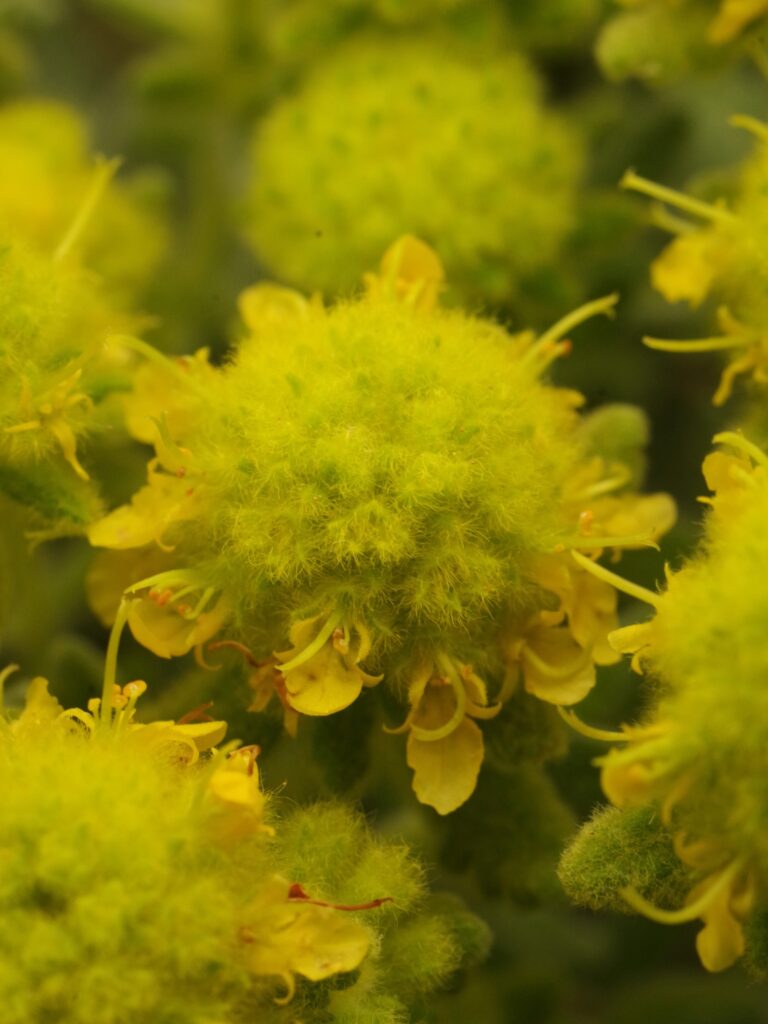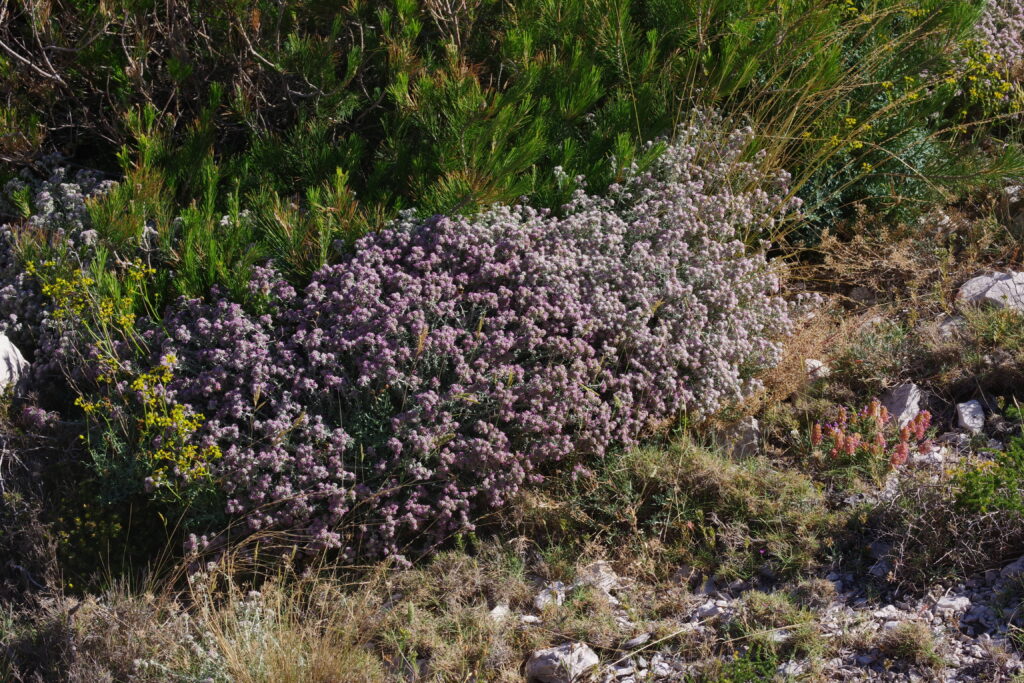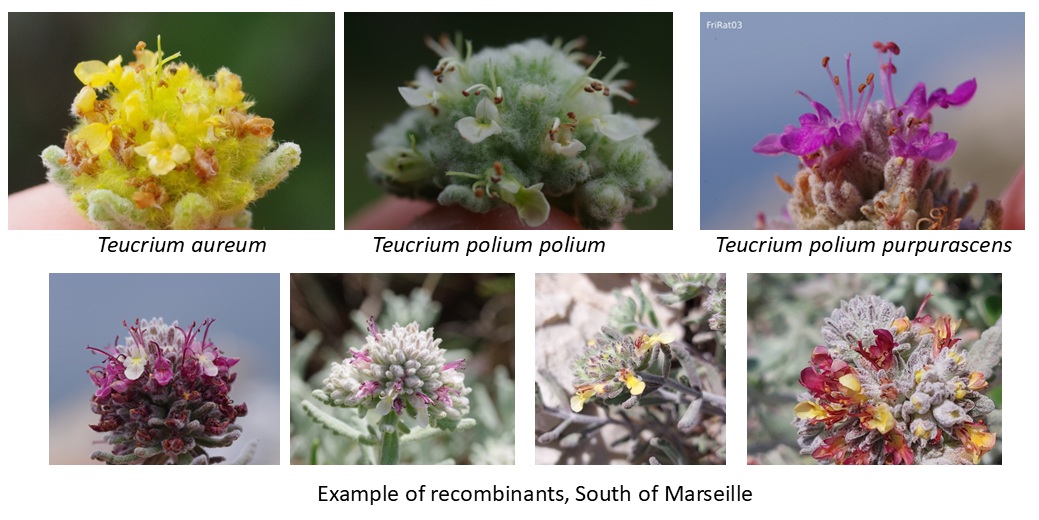With over 400 species, the genus Teucrium represents a rich lineage of the Lamiaceae family, which also includes thyme, rosemary, sage and other aromatic plants. Within this genus, the Polium ‘group’ presents a complex taxonomy, with many subspecies or varieties of the Teucrium polium species elevated to the rank of species that often exist as endemics and are restricted to small geographical areas.

Within this group, Teucrium aureum, also common in Provence, is a widespread taxon commonly referred to as the golden germander due to its yellowish hairs and flowers. It lives in harsh conditions and is abundant on the summits of the Saint Baume and Sainte Victoire mountains.

Teucrium aureum, Col du Cros, Sainte Baume
In the Parc National des Calanques, four taxa represent the Polium ‘group’: T. polium subsp. plum, T. polium subsp. purpurascens, T. aureum and T. cf. dunense. Only the purpurine germander, T. polium subsp. purpurascens, has strong protected status as an endemic taxon of the Bouches du Rhône.

This plant is fairly easy to recognise because of its magenta flowers from mid-May to the end of June. However, its distribution remains elusive. Although its polymorphism on the Frioul Islands aligns with Puech’s (1984) description (magenta flowers, white hair on the inflorescences), the situation changes dramatically on the coast south of Marseille, at the entrance to the PNCal, with a whole range of morphological variations known to botanists (Pavon & Pires, 2020). This pattern was detailed during field observations from 2021 to 2024. Most of the individuals have the expected characteristics of their species (68%), but a significant proportion (32%) shows a recombination of these characteristics, particularly recombinations of floral colours that are unique to the south of Marseille and Riou Islands (Report 2024 by David Torres, 638 individuals observed).

The discovery of these recombinants led to the hypothesis of the existence of a hybrid zone south of Marseille, an intriguing place and a captivating issue for several reasons. Firstly, to understand the phenomena of diversification and evolution by hybridisation in the ‘polium’ group; secondly, to study the processes that have enabled a community of individuals belonging to different taxa to persist and evolve, potentially owing to the phenomenon of hybridisation; and thirdly, because, in a very practical way, the difficulties and confusion of identification weaken the biodiversity in this area of the PNCal, which is highly vulnerable due to industrial pollution and the resulting cleanup projects.

Credits photos A. Baumel